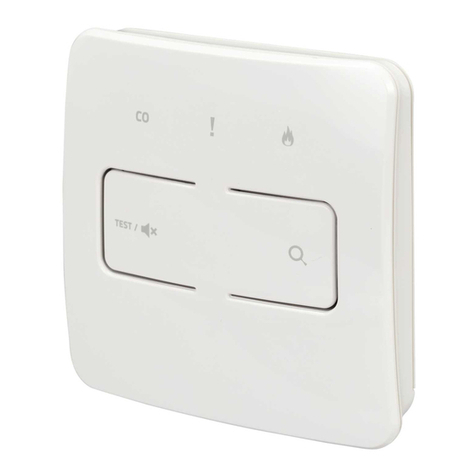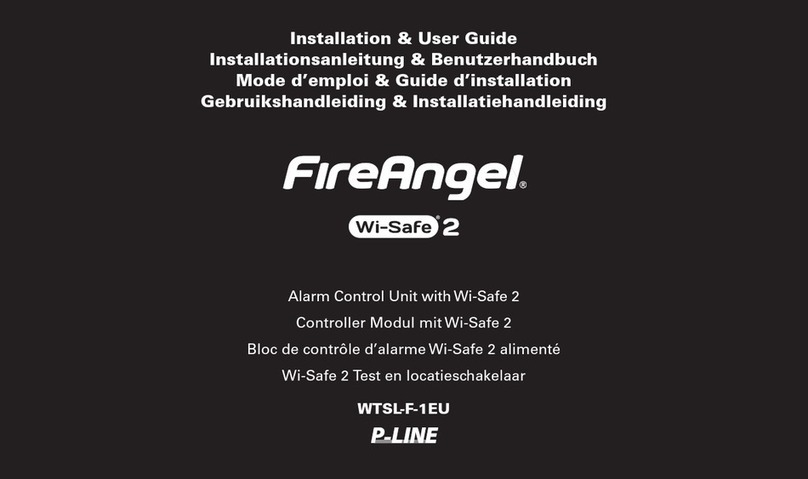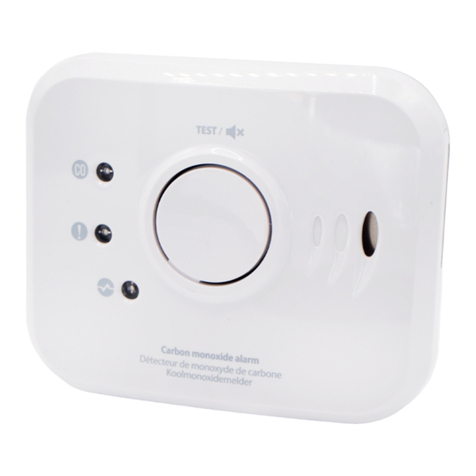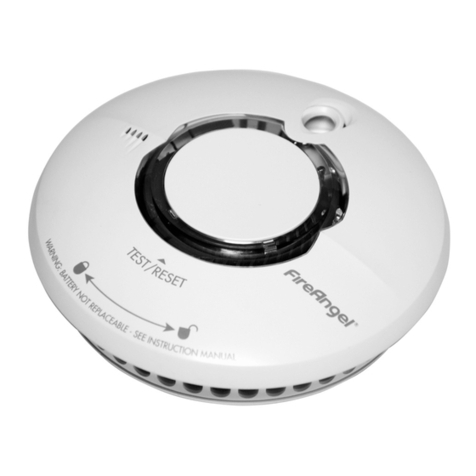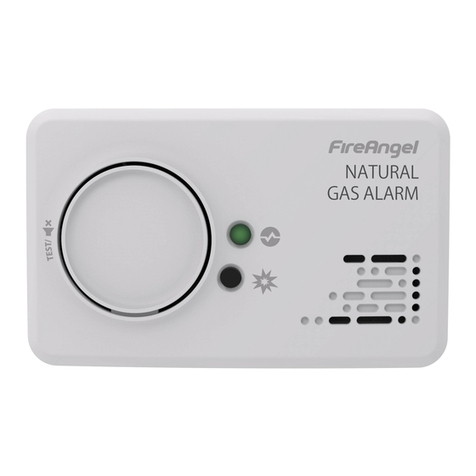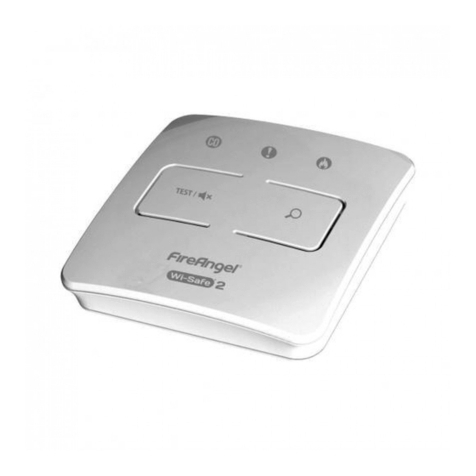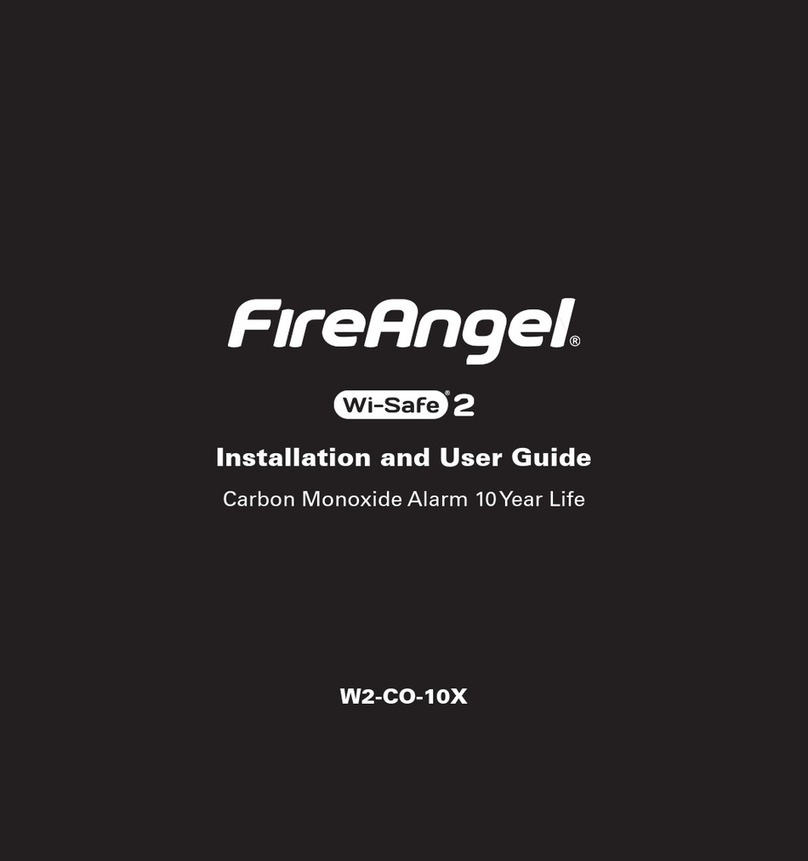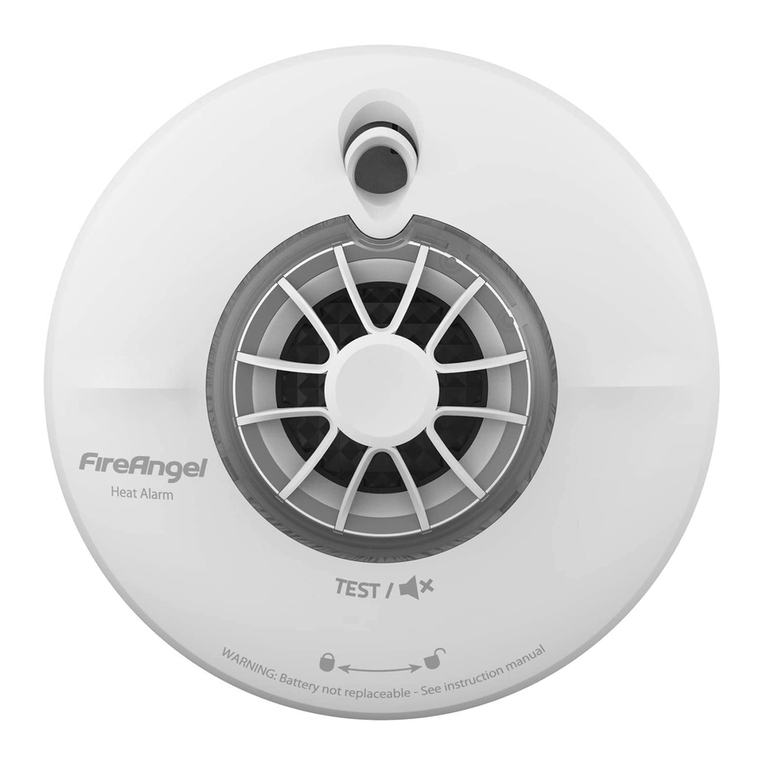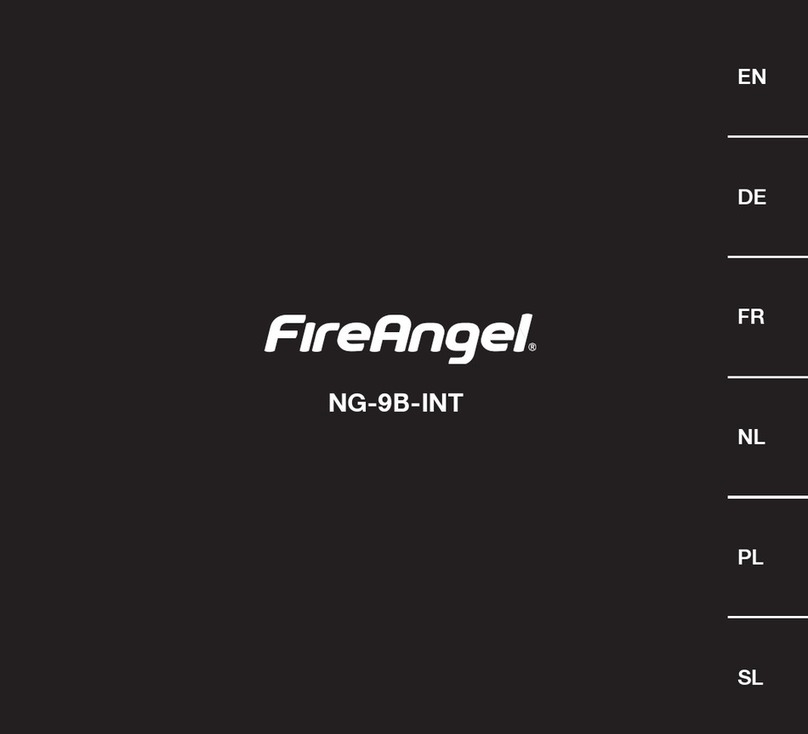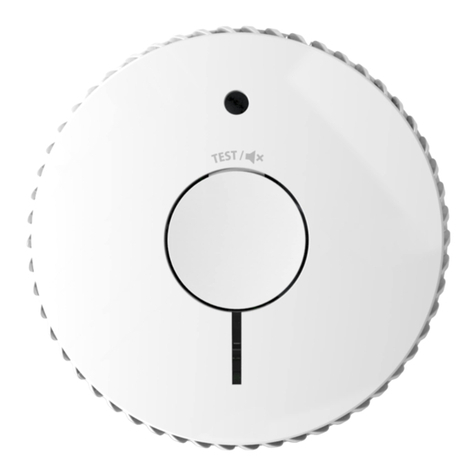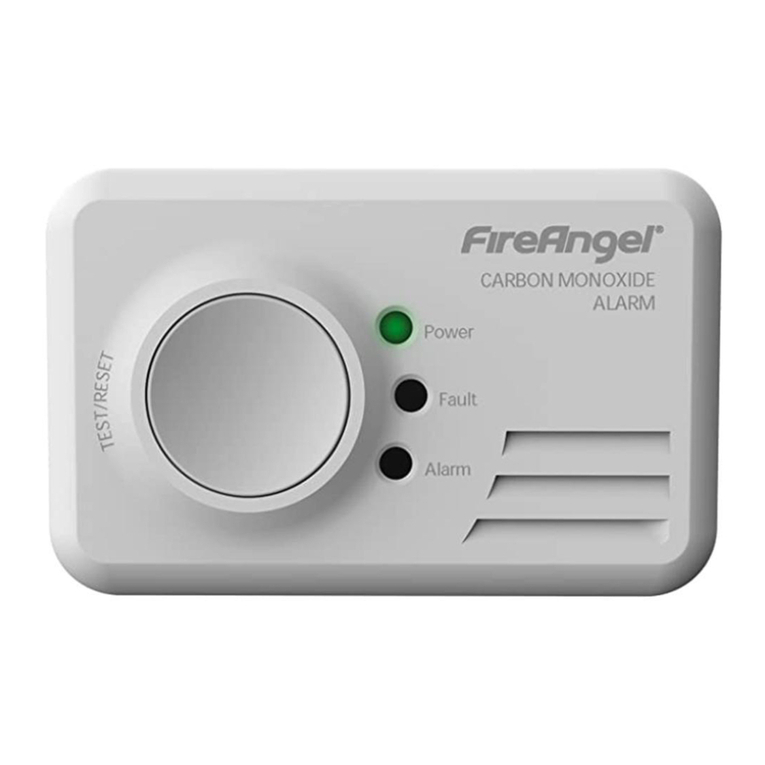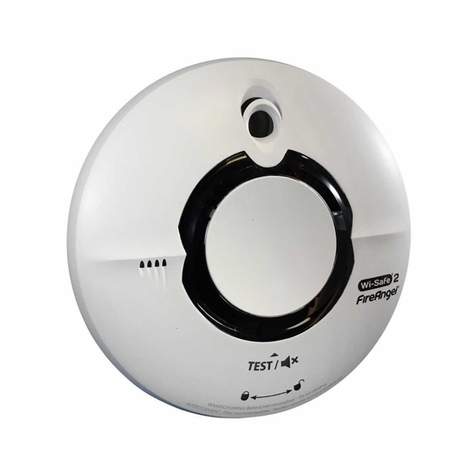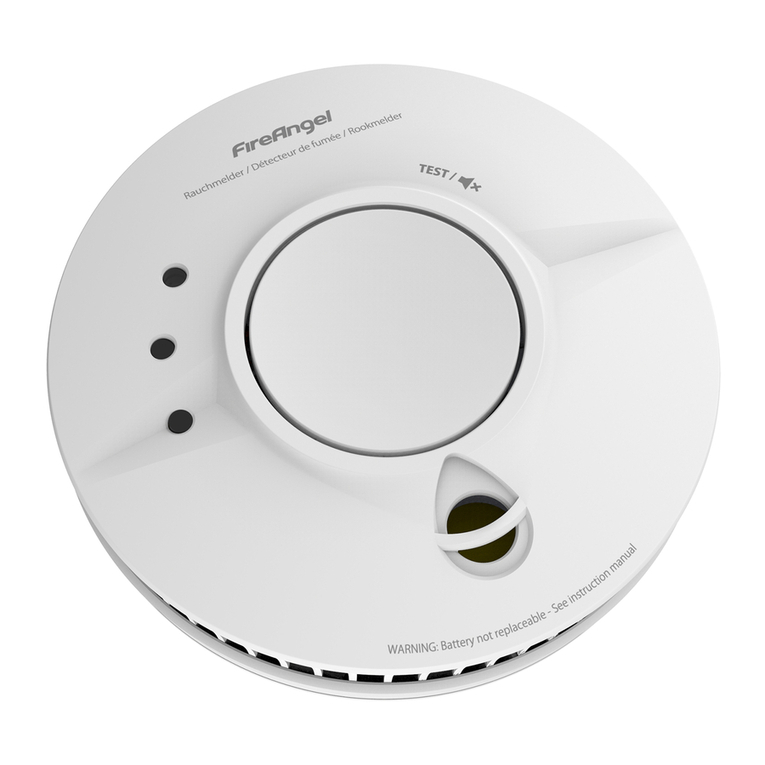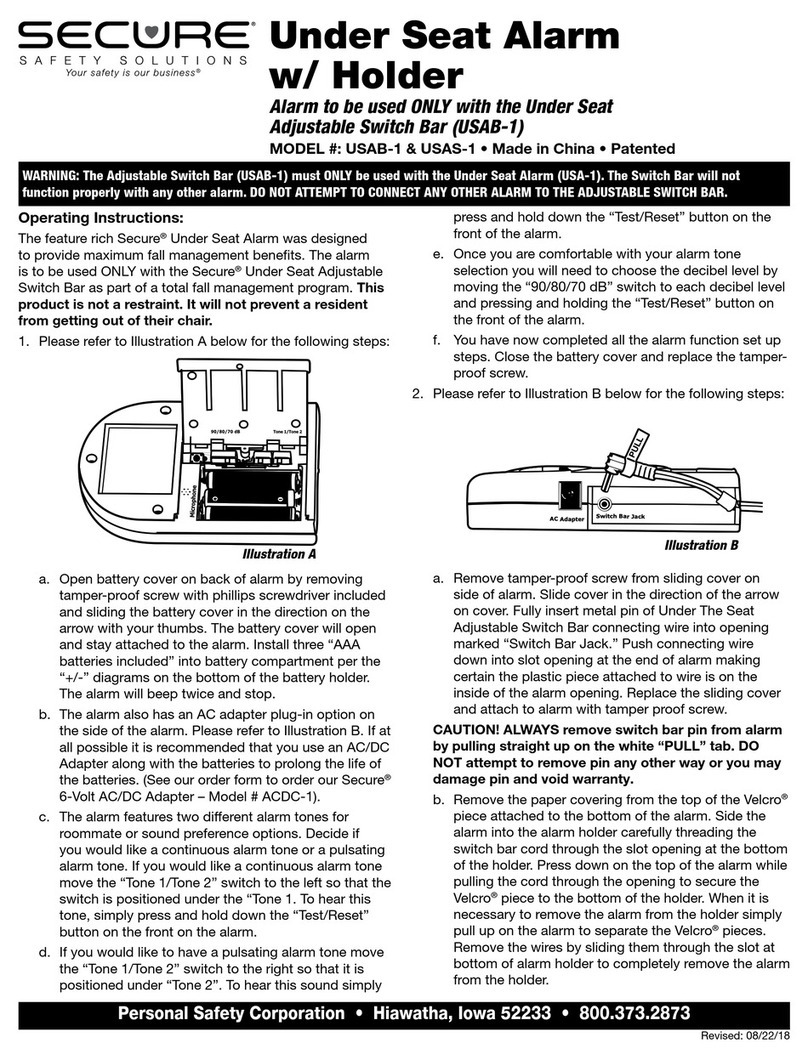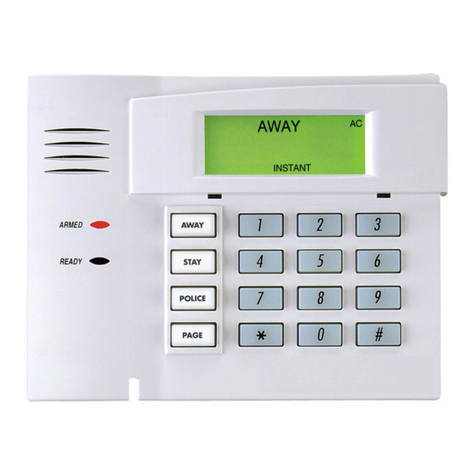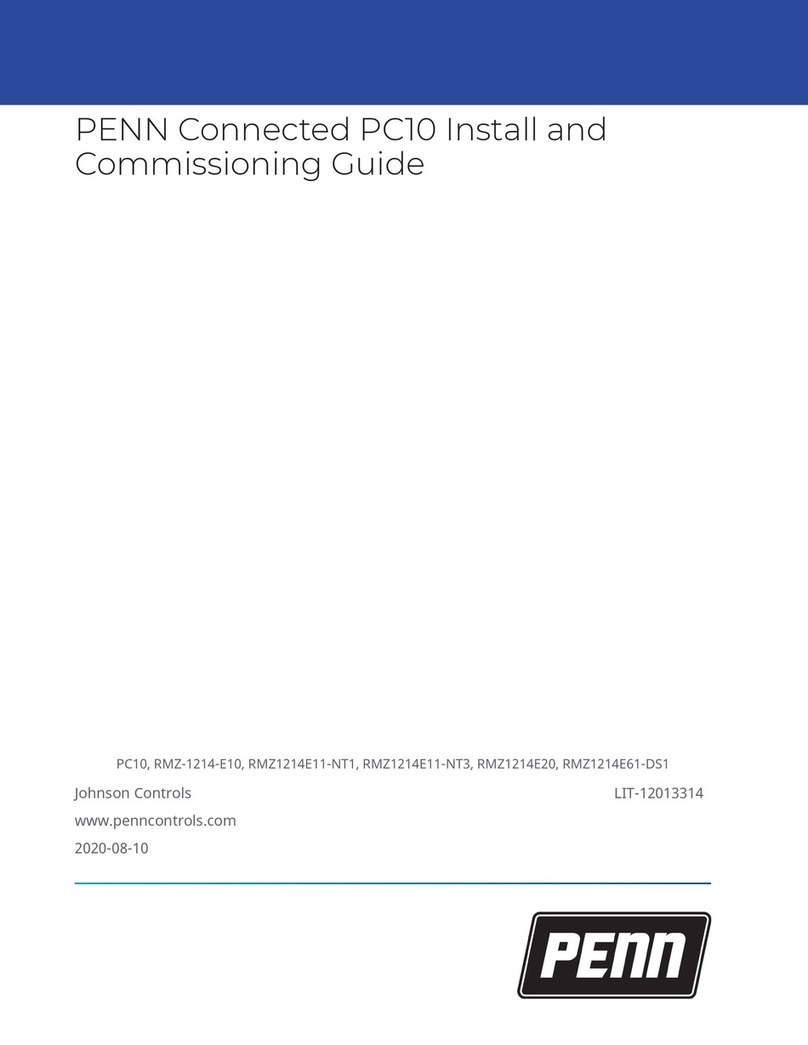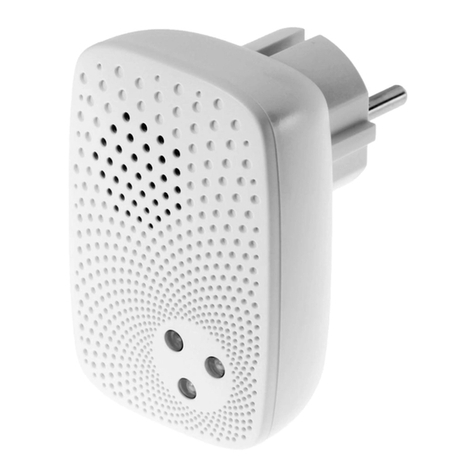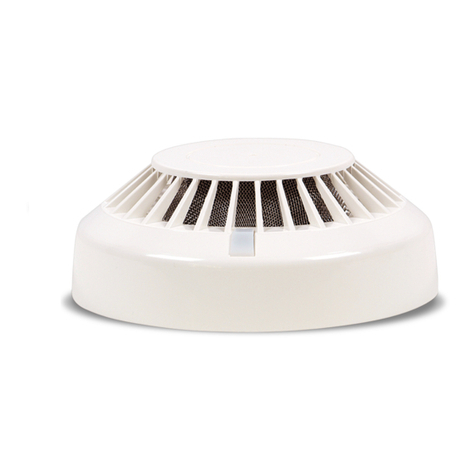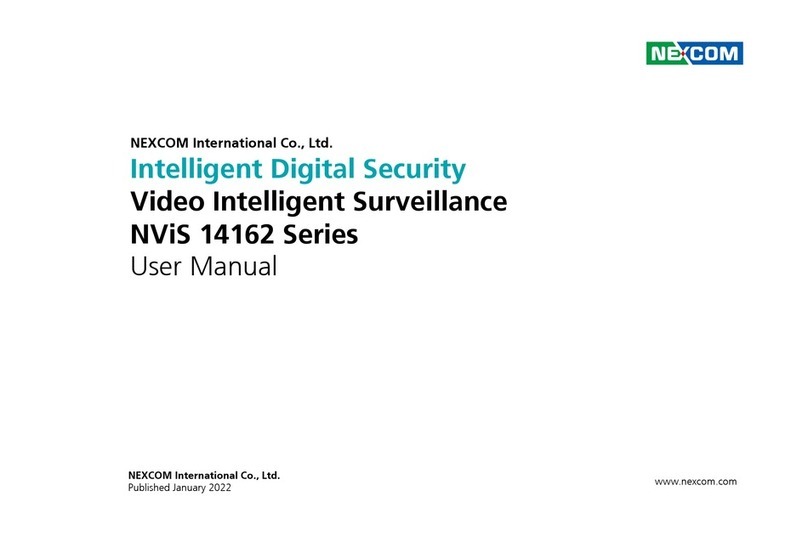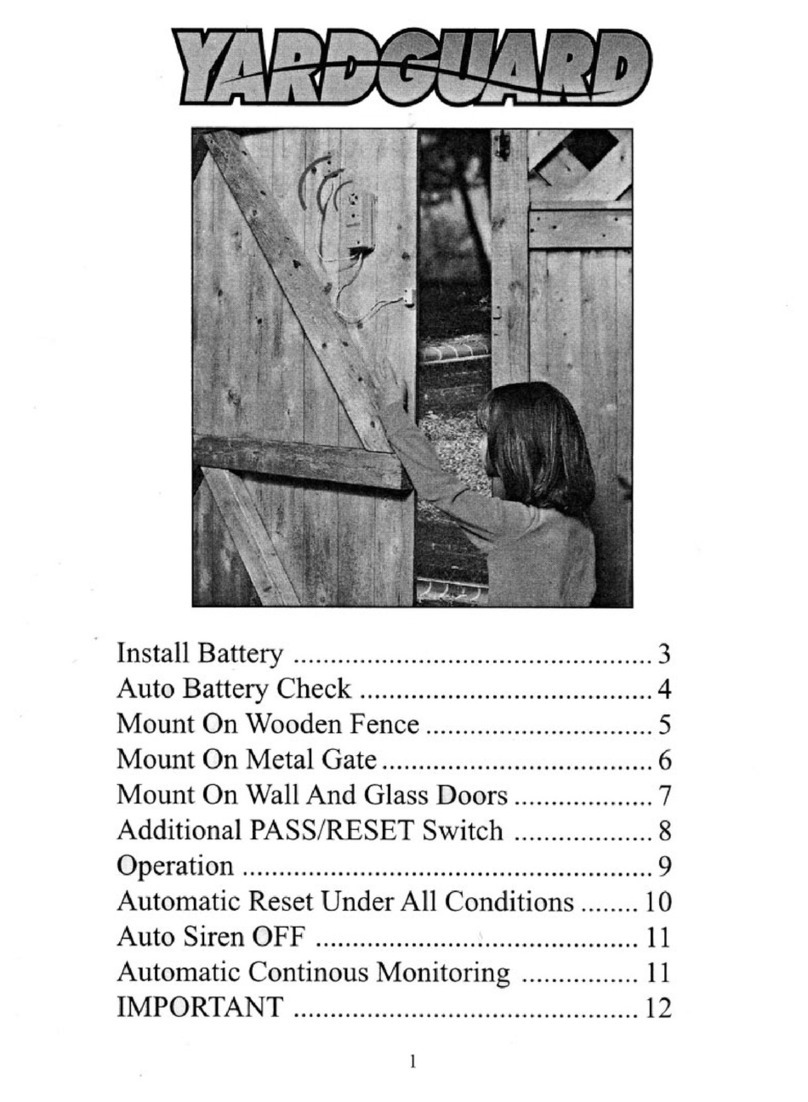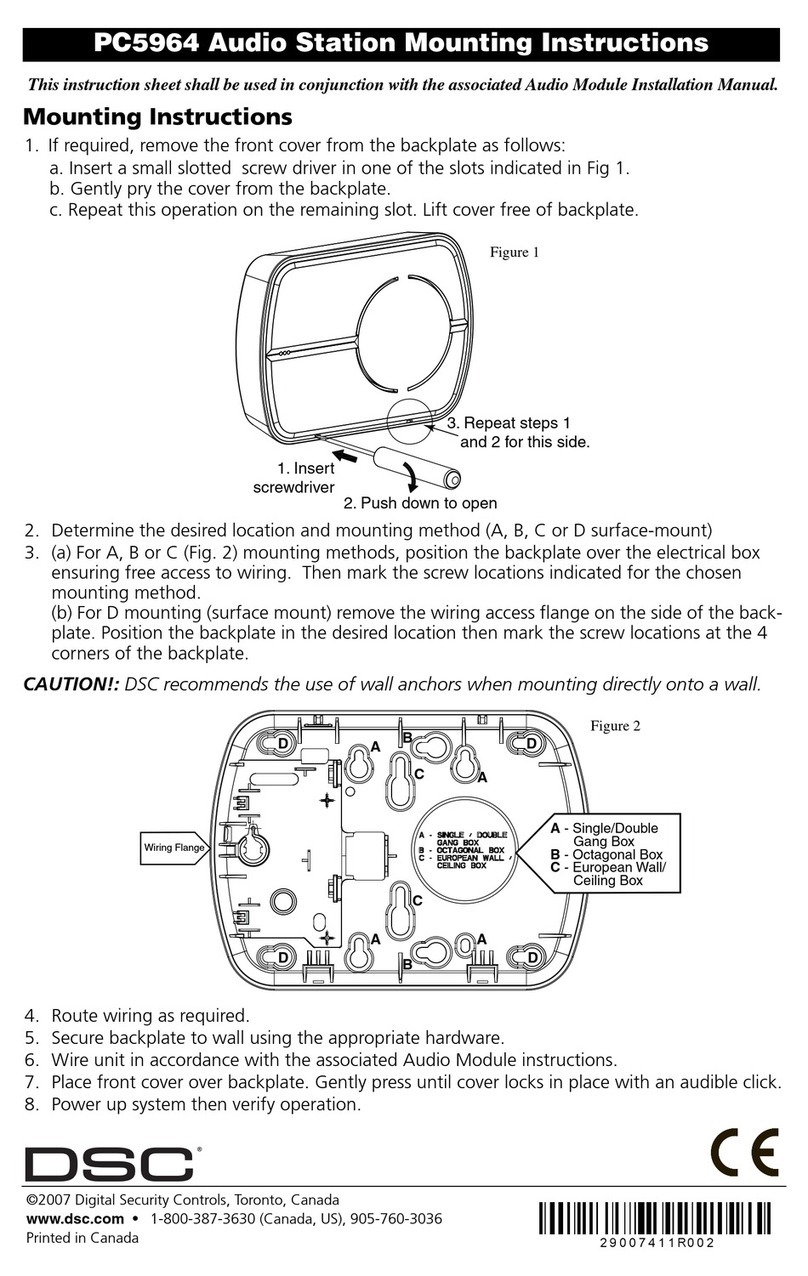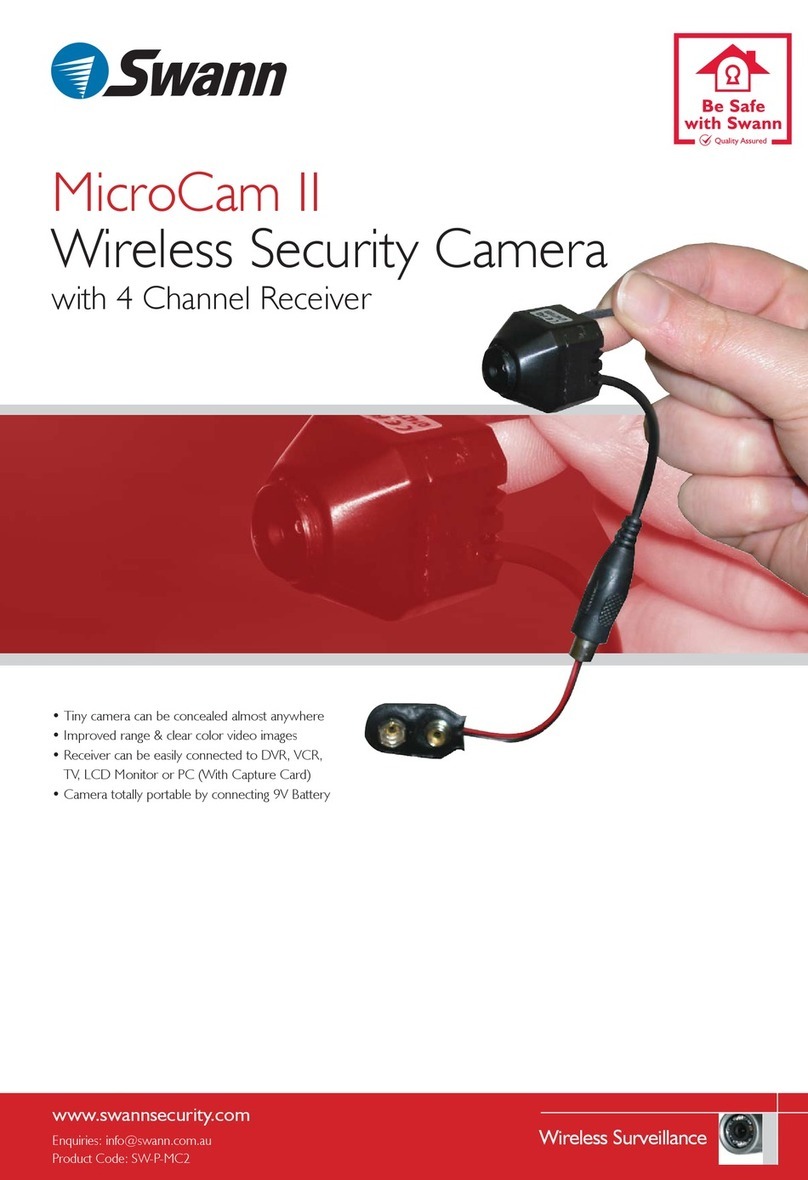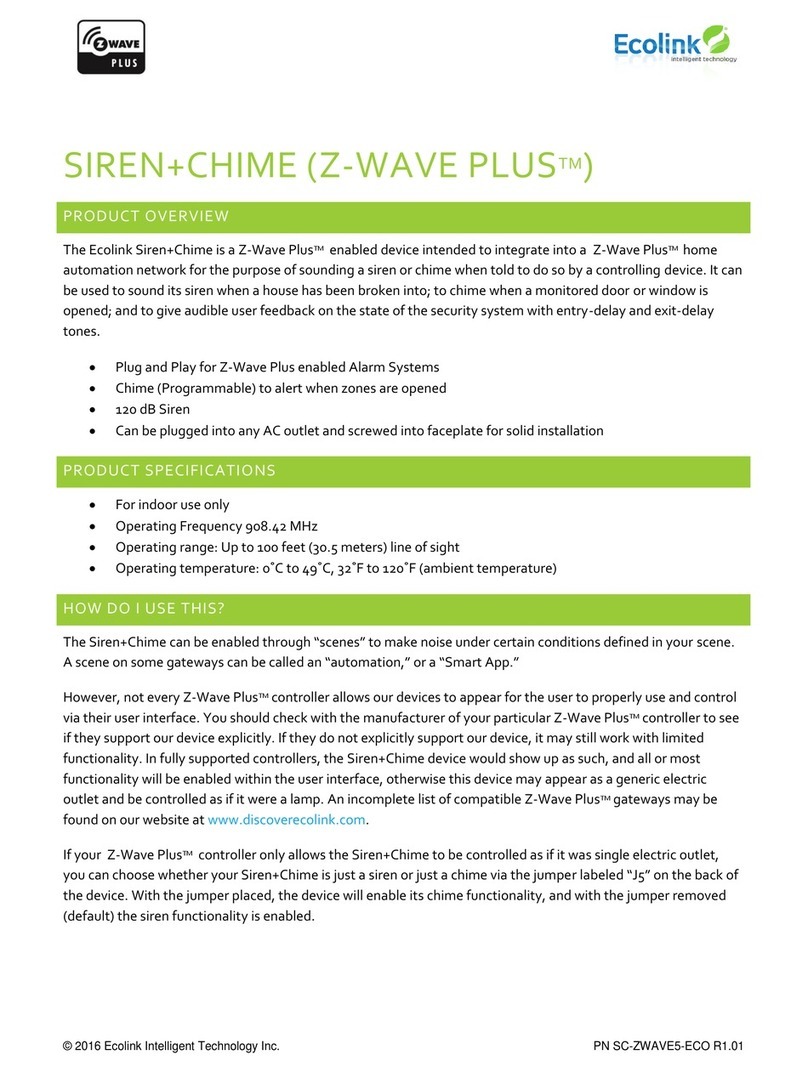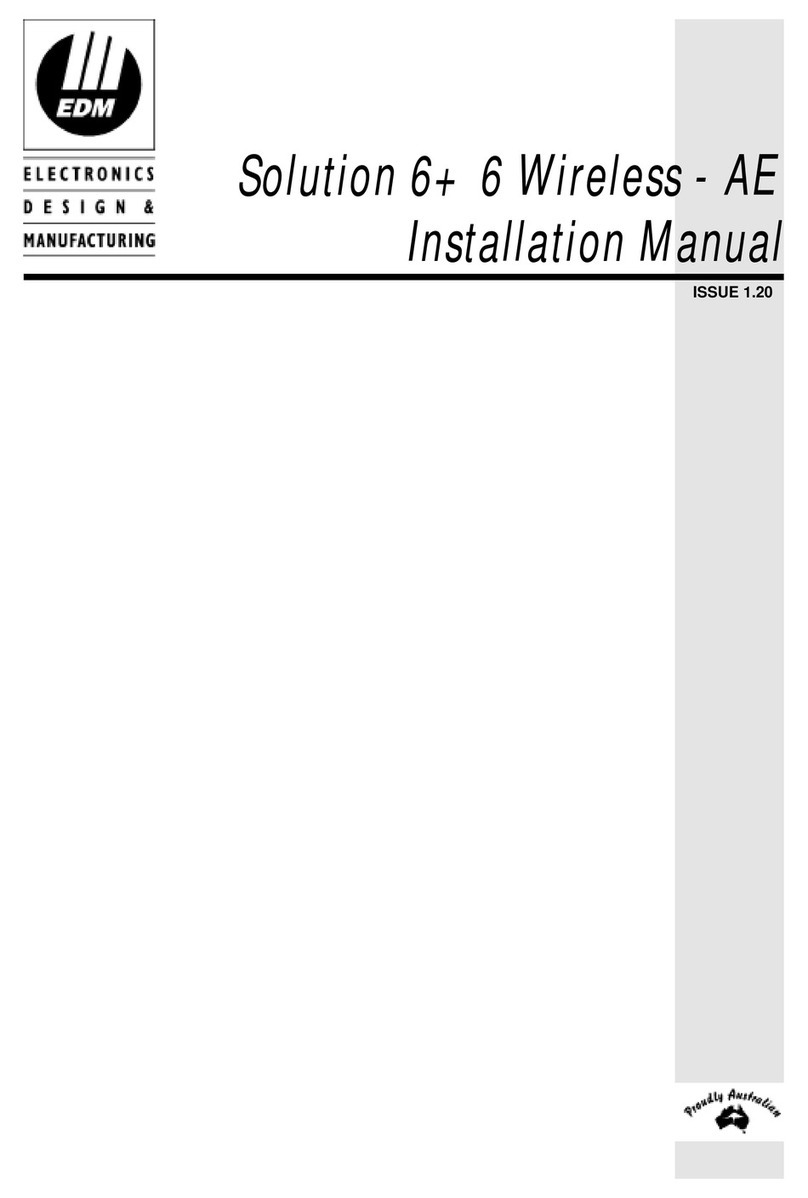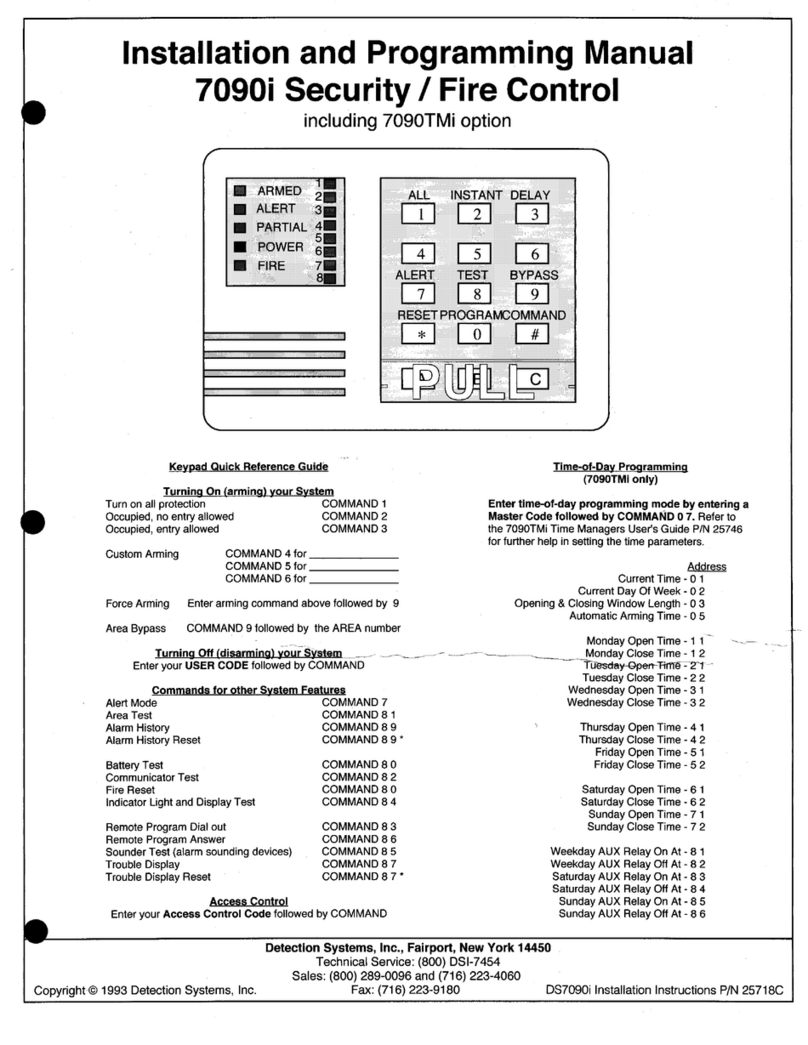
7
EN
WHERE TO INSTALL
YOUR ALARM
This CO alarm is
suitable for use in
domestic premises,
caravan holiday homes, caravans and motor
caravans.
The following advice is applicable to all
intended applications, there are special
instructions at the end of this section relating
to positioning in caravan holiday homes,
caravans and motor caravans.
WARNING: This detector will only indicate
the presence of carbon monoxide gas at the
sensor. Carbon monoxide gas may be present
in other areas.
In which room should the detector
be installed?
Ideally, an alarm should be installed in every
room containing a fuel-burning appliance.
Additional alarms may be installed to ensure
that adequate warning is given for occupants
in other rooms, by locating alarms in:
• Remote rooms in which the occupant(s)
spend considerable time whilst awake and
from which they may not be able hear an
alarm from devices in another part of the
premises, and
• Every sleeping room.
However, if there is a fuel-burning appliance
in more than one room and the number of
alarms is limited, the following points should
be considered when deciding where best to
put the alarm:
• Locate the alarm in a room containing a
ueless or open-ued appliance, and
• Locate alarms in a room where the
occupant(s) spend most time.
• If the domestic premises is a bedsit (a
single room serving as both sitting and
bedroom) then the alarm should be put
as far from the cooking appliances as
possible but near to where the person
sleeps.
•If the appliance is in a room not normally
used (for example a boiler room), the alarm
should be put just outside the room so
that the alarm may be heard more easily.
Alternatively, a remote alarm siren
may be connected to a type A alarm
located in a room(s) containing a fuel-
burning appliance.
Where in the room should I place
the detector?
Alarms located in the same room as a fuel-
burning appliance, for both wall and ceiling
mounted alarms the following applies:
a The alarm should be at a horizontal
distance of between 1m and 3m from the
potential source.
b If there is a partition in a room, the alarm
should be located on the same side of the
partition as the potential source.
c Carbon monoxide detectors in rooms with
sloped ceilings should be located at the
high side of the room.
In addition to the above the following must be
observed if the alarm is located on a wall:
a it should be located close to the ceiling;
b it should be located at a height greater than
the height of any door or window;
c it should be at least 150mm from
the ceiling.
If the alarm is located on the ceiling:
a it should be at least 300mm from any
wall and any ceiling obstruction e.g. light
ttings.
Alarms located in sleeping rooms and in
rooms remote from a fuel-burning appliance
should be located relatively close to the
breathing zone of the occupants.
Caravans
Caravans may have additional risks of carbon
monoxide ingress through air vents due to the
nearby presence of other vehicles, engines,
generators or barbecues, however this does
not change the basic guidance on location of
the alarm. Caravans should be tted with an
alarm in the same room as any combustion
appliance(s), located in accordance with
previous advice in this section. If the caravan
has a single living space which incorporates
the sleeping accommodation, it can be
considered to be equivalent to a bedsit,
and a single alarm is sufcient. However,
any sleeping accommodation which is
in a separate room from the combustion
appliance(s) should also contain an alarm,
located in accordance with previous advice in
this section.
It is not always possible to nd an optimum
location for an alarm, for example, a small
caravan may not have suitable vertical
surfaces available. Nevertheless, when tting
an alarm in such situations, the two most
